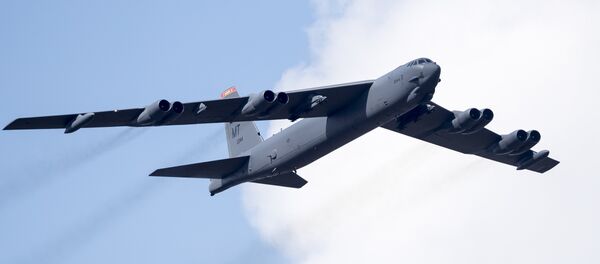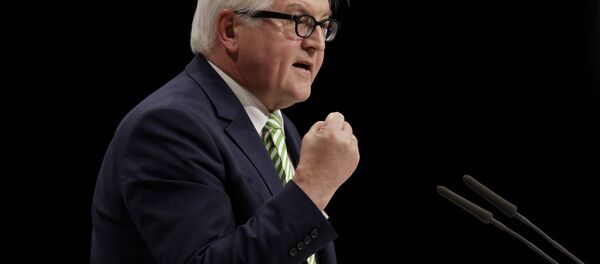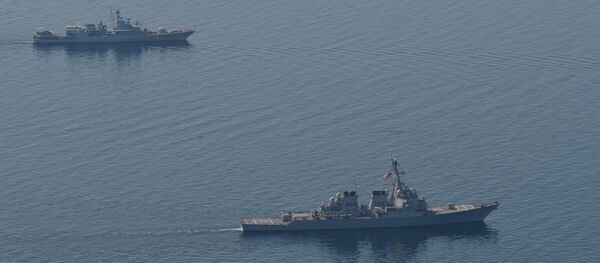In a recent analysis for the paper, the official organ of the French political party of the same name, Bierre warned that "when we talk about the Cuban Missile Crisis of 1962, only in reverse, this is not just rhetoric. Nearly 60,000 soldiers of NATO and allied countries have been participating in four series of maneuvers in the Baltic countries, Romania and Poland."
"The most provocative among these exercises were the recently completed Anaconda-16 drills in Poland," the journalist suggested. "Moreover, they were not organized by NATO, but by Poland itself, which the British and Americans have been inciting against Warsaw's old Russian enemy. In total, these exercises involved around 31,000 troops from 24 countries, making them the largest the country has seen since the collapse of the Warsaw Pact in 1991."
As if that weren't enough to escalate tensions between Moscow and NATO, Anaconda-16 is being complemented by Baltops-16, Saber Strike-16, and Swift Response-16, the latter involving Germany and Poland. "The chart published by the Department of Defense…speaks for itself," Bierre noted.
#SwiftResponse 16 in Poland focuses on airborne @82ndABNDiv @173rdAbnBde https://t.co/3xQYj15eCC pic.twitter.com/burfwoAqIF
— USAG Bavaria (@USAGBavaria) 8 июня 2016 г.
"But it was in the eastern Mediterranean and Black seas that the Russians and Americans could find themselves nose to nose," the journalist added.
"Facing Russian fighter jets which have repeatedly made it clear to US ships deployed too close to their borders in the Baltic and Black seas that Russia would like them to go play somewhere else, the United States has decided to respond with a show of strength."
Meanwhile, an anonymous official was even more blunt, telling the paper that the Truman's deployment "provides some needed presence in the Med to check…the Russians. The unpredictability of what we did with Truman kind of makes them think twice."
In effect, Bierre noted, "this NATO show of force became a prelude to the upcoming summit in Warsaw, where the European allies will be asked to approve the deployment of additional troops and equipment in the Baltic countries, Romania and Poland."
"As for Russia, while taking care not to overreact to the delirious discourse of the United States, it has taken countermeasures, including [the planned] deployment of new RS-28 Sarmat hypersonic intercontinental ballistic missiles, scheduled for between 2018-2020," she added. "These can carry between 10 and 15 nuclear warheads, and are equipped with advanced electronic systems; their goal is to break through the US missile shield in Europe."
#Russia is building the largest ICBM ever #Sarmat https://t.co/4juTaIbVcz pic.twitter.com/wOXVDcJsyR
— Andrew Hornet (@AndrewHornet) 10 мая 2016 г.
In an interview for Bild am Sonntag two weeks ago, Steinmeier warned that "there is no need to aggravate the situation with the clatter of arms and militant rhetoric. Anyone who thinks that symbolic tank parades on the eastern border of the alliance will create more security is mistaken. Military exercises simulating a response to 'Russian aggression' are counterproductive and dangerous."
Moreover, Bierre pointed to a recent opinion piece in The Washington Times by Russia experts Edward Lozansky and Gilbert Doctorow, which denounced the demonization of Russia by the media and called for the beginning of a 'perestroika' in the USA.
According to the two experts, "the impending failure [of US foreign policy] and our going off the cliff into World War III has to be the country's first concern. Come nuclear war, which, sadly, is more likely now than at any time since the Cuban Missile Crisis of 1962," all other political debates and priorities "will go out the window."
Meanwhile, Bierre warned, the recent proposal by Center for Strategic and Budgetary Assessments official Evan Branden Montgomery on the creation of an Asian NATO "leaves no doubt about the US's willingness to maintain their supremacy by force. It proposes extending the US nuclear arsenal in South Korea and Japan by creating a Nuclear Planning Group, under which some allies will receive permission to use these weapons."
"In this context," the analyst suggested, "extreme tensions and an almost complete absence of dialogue between Russia and the United States mean that even the most minor incident can result in a fatal chain of events leading to war."
As far as France is concerned, Bierre pointed out that there are still signs of hope: As on the question of anti-Russian sanctions, France has its own view on NATO's buildup in Eastern Europe. "Following the National Assembly vote in April, the Senate adopted, with a large majority (302 votes vs. 16) a resolution [calling] for 'a progressive and sectorial lifting' of sanctions on June 8."
Meanwhile, she added, "if military journalist Jean-Dominique Merchet is to be believed, France deliberately ignored the Anaconda-16 exercise in Poland… As the military analyst suggested in France's l'Opinion newspaper, France's participation was "not immediately useful."
In his article, Merchet argued that "the French military is concerned primarily with the southern flank: Africa and the Middle East," and "hardly interested in the East," and Russia. Explaining this, he pointed to the "historical tendency on which the imperatives of the fight against terrorism and the pro-Russian sentiments in part of the military hierarchy, along with sympathies from right-wing supporters of French sovereignty for Russia's leader, and a perception of the Poles and the Balts as countries" which suffer from "a fever of paranoia."
Ultimately, it is unknown how today's world leaders will respond to what Bierre dubbed the 'reverse Cuban missile crisis'; however, maybe it's time for US leaders to take a hint from Soviet leader Nikita Khrushchev's playbook, when the latter pulled Soviet missiles out of Cuba and thus pulled the world back from the brink of catastrophe.





